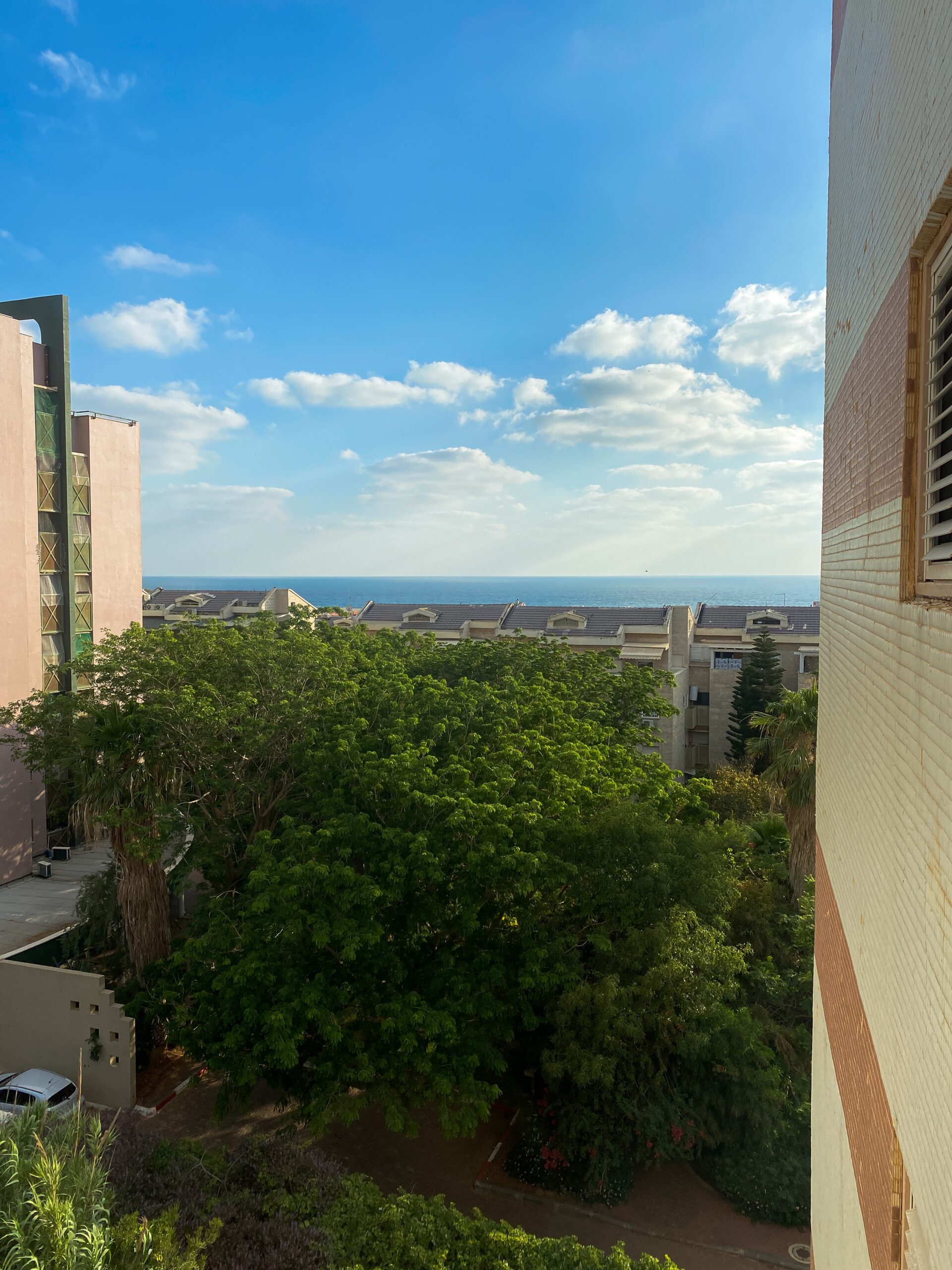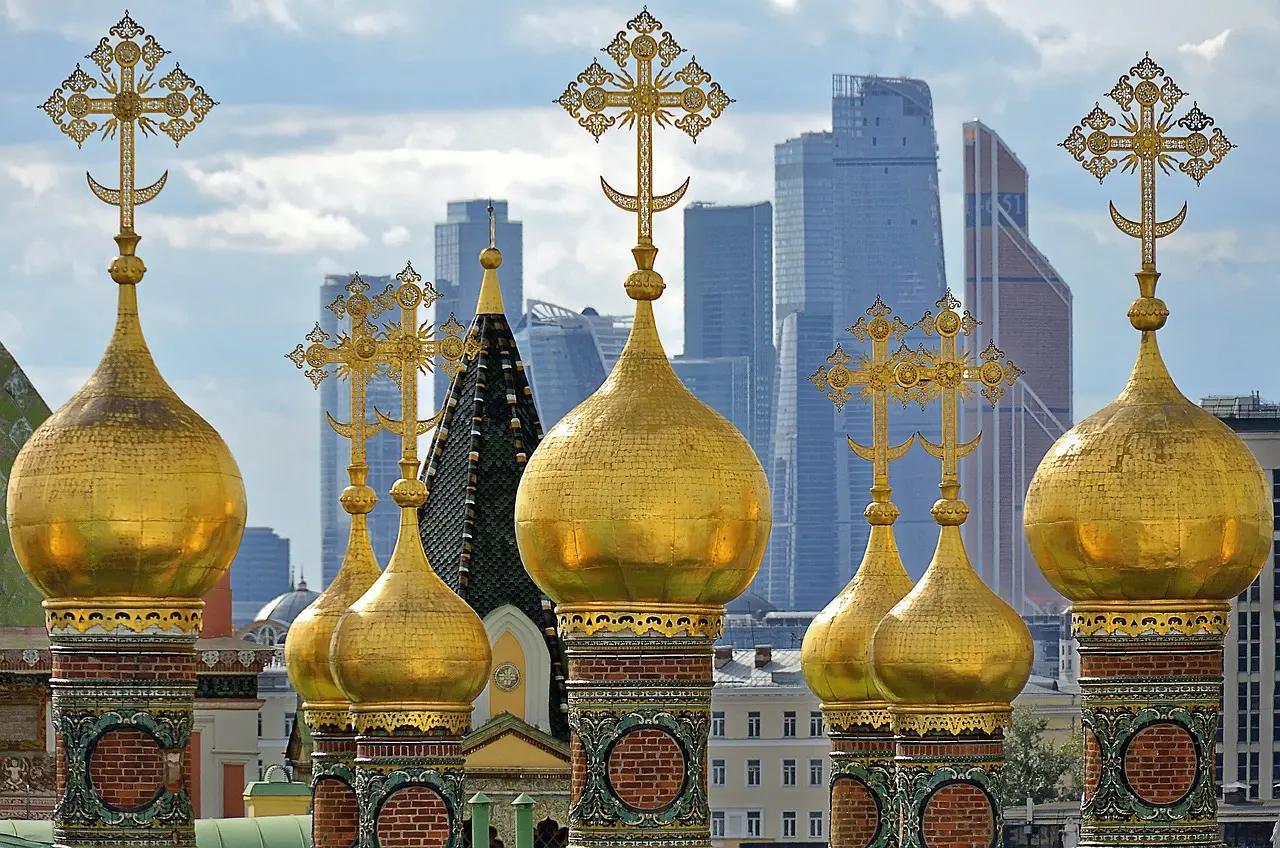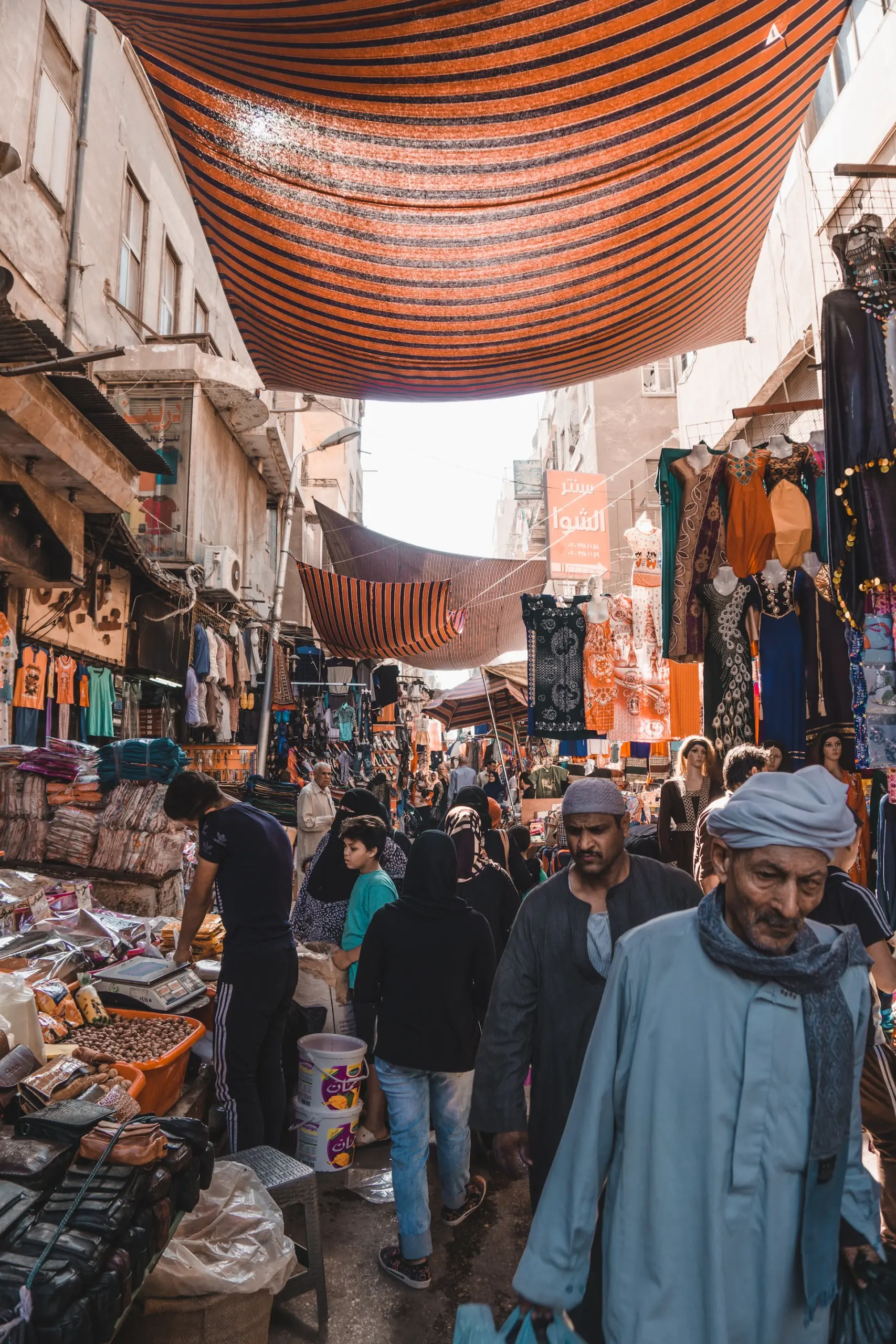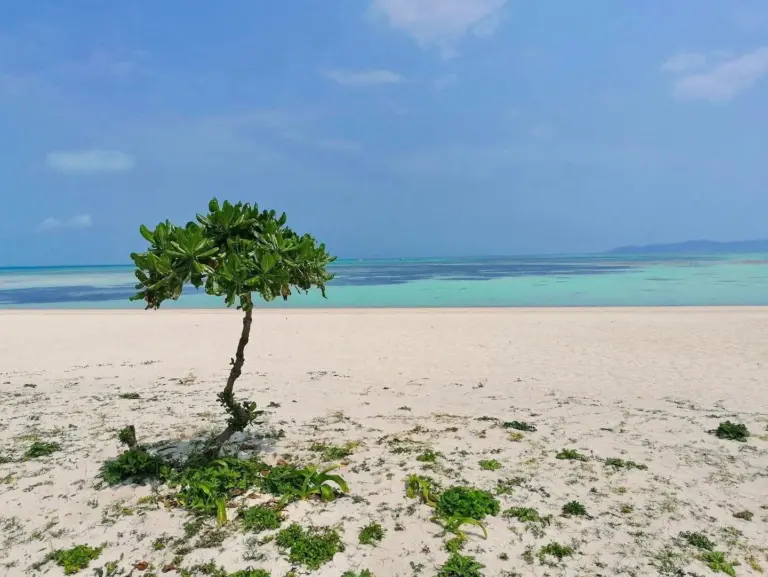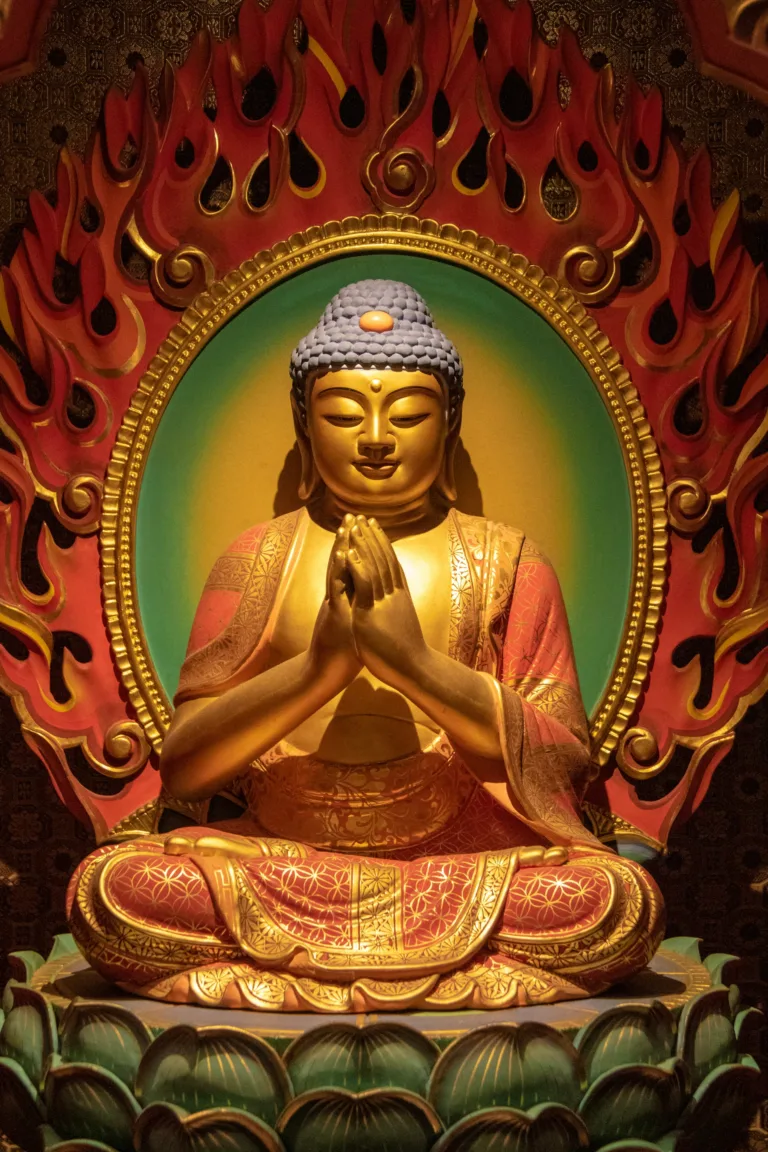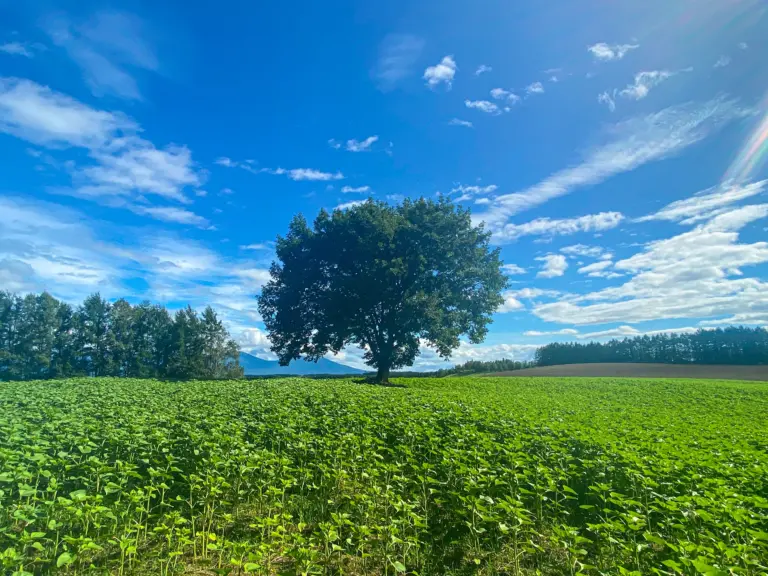Just a short drive from Ulaanbaatar, Hustai National Park stands as a remarkable reserve, spanning over 50,000 hectares of grassland and forest steppe.
More than just a park; it’s a sanctuary where the wild spirit of Mongolia is still celebrated to this day!
Among its rolling hills and rugged landscapes, Hustai harbors a treasure of the natural world—the Przewalski’s horse, known locally as Takhi.
These majestic animals are the last truly wild horses on Earth, and here they roam freely. Symbolizing the success of one of the most ambitious and inspiring conservation efforts in recent history.
So what really is Hustai? Well, Hustai itself is an experience, offering a journey into the wild heart of Mongolia where the legacy of the land and its creatures are preserved for future generations to cherish.
Table of Contents
Toggle
History of Hustai National Park
The park was officially established in 1993, but its roots in conservation efforts trace back to the late 1980s with the aim to reintroduce the Przewalski’s horse back into its native habitat.
This species, once roaming freely across the Mongolian steppes, faced extinction in the wild by the 1960s due to a combination of hunting, competition for water with livestock, and habitat loss.
The Przewalski’s horse survived only in zoos and private reserves around the world for several decades. In a bold move to restore Mongolia’s natural heritage, an international collaboration involving scientists, conservationists, and the Mongolian government embarked on a program to reintroduce these horses into the wild.
Hustai National Park was selected as the ideal location for this groundbreaking project due to its suitable habitat and historical significance as part of the horse’s original range.
The first group of Przewalski’s horses was released into Hustai National Park in 1992, marking a significant milestone in conservation history. These horses, carefully selected from zoological institutions worldwide, adapted well to their new environment, gradually forming stable herds and breeding successfully in the wild.
This success story has turned Hustai into a global model for rewilding and species conservation.

Biodiversity of Hustai National Park
Hustai National Park is a vibrant mosaic of ecosystems, the park’s landscape is a dynamic blend of steppe, forest steppe, and woodland, shaped by the undulating terrain and the Tuul River’s life-giving waters.
The ecosystem of Hustai National Park supports an impressive variety of flora, with over 450 species of plants recorded.
Fauna in Hustai is as diverse as its plant life, with the park being home to more than just the iconic Przewalski’s horse. It provides habitat for several other mammal species, including red deer, roe deer, gray wolves, and the elusive lynx. The steppe and woodland areas are teeming with smaller mammals like marmots, ground squirrels, and hares, which in turn support a variety of predators and scavengers, creating a complex web of life.
Birdlife in Hustai National Park is particularly rich, with over 200 species documented. The park’s varied environments attract a wide range of birds, from raptors like eagles and vultures, which soar above the open landscapes, to smaller birds such as larks and finches that thrive in the dense vegetation. The presence of the Tuul River and other water sources within the park also provides critical habitat for migratory waterfowl, making Hustai an important site for birdwatching and ornithological research.
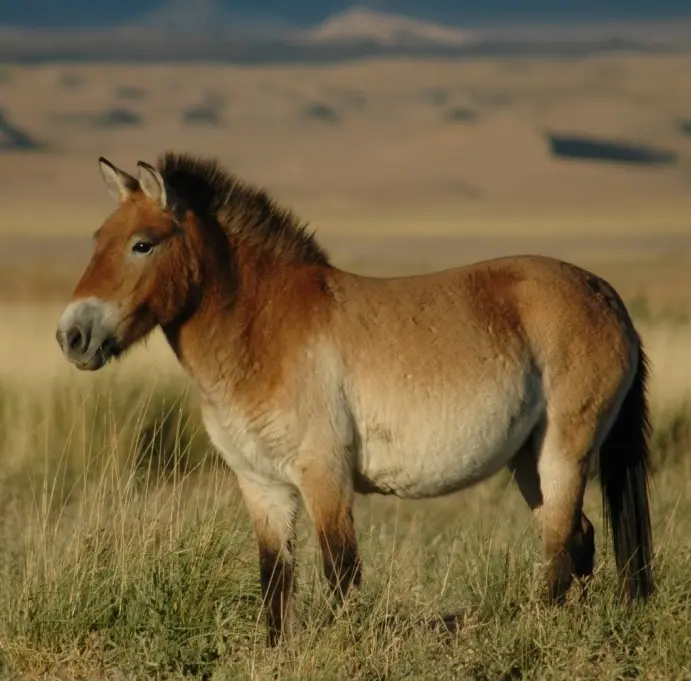
The Przewalski's Horse
The Przewalski’s horse, scientifically known as Equus ferus przewalskii, stands as the last truly wild horse species in the world, distinct from the domesticated horses that are familiar to us today. It is named after the Russian geographer and explorer Nikolay Przewalsky.
Characterized by their stocky build, dun coloration, dark mane, and the distinctive eel stripe running down their back, Przewalski’s horses are a symbol of the untamed wilderness that once spanned across Eurasia. Unlike domestic horses, they have never been successfully tamed by humans, maintaining their wild nature through the centuries.

Archaeological Sites of Hustai National Park
Hustai is also home to a diverse array of historical monuments that provide insight into the lives of ancient civilizations that once thrived in this region. Here is an overview of the historical sites found within Hustai National Park:
Rectangular Graves: The park contains over 160 rectangular graves, all attributed to the Bronze Age tribes, dating back to the 3rd or 2nd century BC.
Sepulture Graves: There are 19 massive sepulture graves discovered in the southern part of Hustai National Park. These graves vary in shape, with most being circular and some rectangular, featuring 8 or 9 stones at each corner, adhering to ancient burial customs.
Ongot Monuments: This site is the largest recorded monument of its kind in Mongolia and Central Asia, consisting of a collection of 30 stones. These monuments date back to the 6th and 7th centuries during the Turkish Empire’s rule over Mongolia. Among these, one lion-shaped stone and one sheep-shaped stone stand out, accompanied by 552 balbal stones arranged in a line to the east.
Deer Stone: A single deer stone stands in the Huurai valley, dating back to the 2nd or 1st century BC. Deer stones are significant archaeological artifacts that are thought to serve as memorials.
Stupa Ruins: The ruins of a Buddhist stupa (see also: the White Stupa), located in the southwest of the park, represent another intriguing historical site, although their exact age is still unknown.
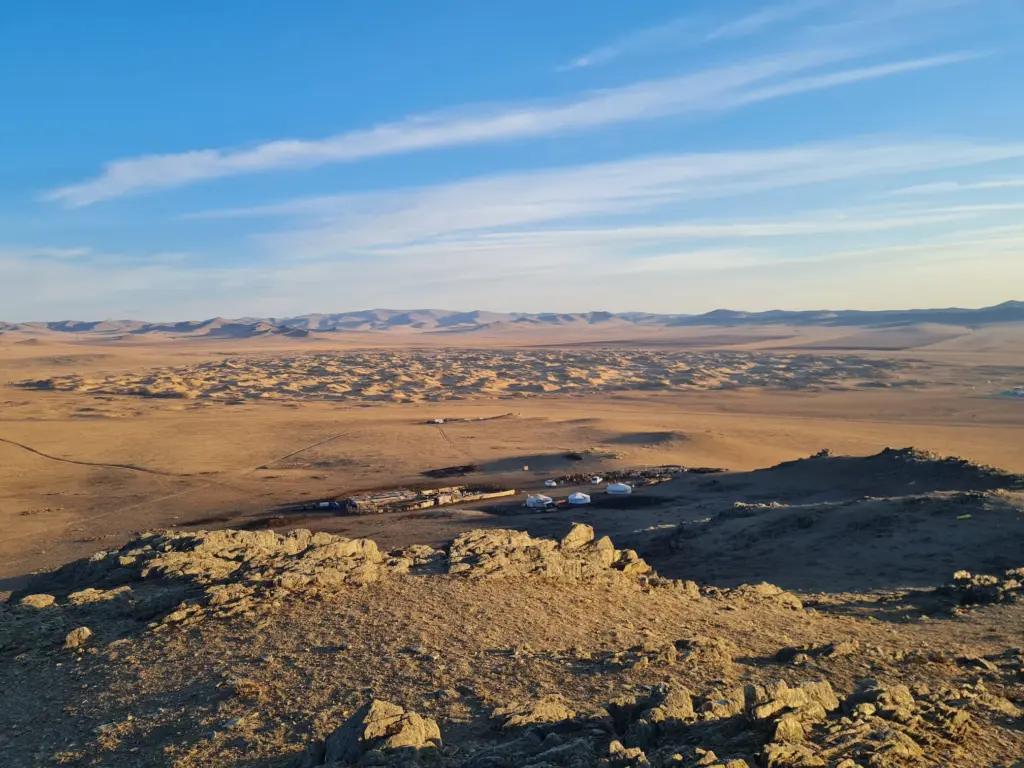
What to Expect when Visiting Hustai National Park
- We went and stayed with UB Guesthouse Tours so the information provided here is based on our experience with them. Hustai Park was part of the 3-day tour we did including the Erdene Zuu Monastery and the Waterfall at Orkhon Valley. You can also read more about our 5-day Gobi itinerary here.
- The camping grounds here are top-notch. It was like glamping. We stayed in a traditional yet modern ger with showers and toilets though they were still in the middle of upgrading at that time.
- The park requires an entrance fee of 22,000 MNT though this is most likely already included in your tour fee.
- There’s also some space debris that fell and you can see that right in front of the park’s museum. I highly recommend checking it out when getting your tickets to get more info on the Przewalski’s horse.
- Take your time and enjoy every stop, sit by the grass and watch the wildlife. You can go trek but confirm with your driver on where the pick up spot is.
- Watching the sunset in Hustai’s desert is simply sublime. It was probably what made me fall in love with it in the first place.
- You should bring some binoculars or a camera with good zoom if you really want to see the wildlife, they are quite skittish so approaching them is not the best option.
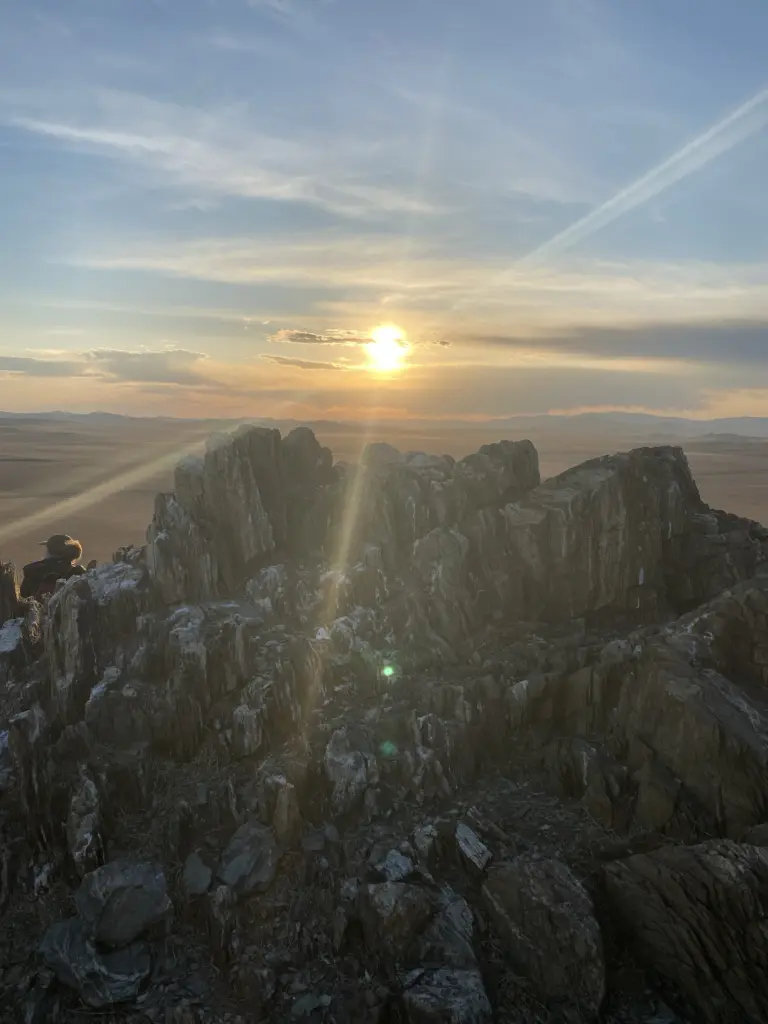
Best Time to Visit Hustai National Park
The ideal time to explore Hustai National Park, with its breathtaking vistas and unique wildlife including the Przewalski’s horse, spans from the refreshing warmth of late spring through the vibrant early autumn, specifically from May to September. This period offers the most favorable conditions for visitors, blending comfortable weather with the park’s natural allure.
In late spring, from May to June, the park awakens under temperatures that gently climb from 10°C to 20°C (50°F to 68°F). The landscape bursts into life, flora begins to flourish, and animals, including the iconic Przewalski’s horses, become increasingly active.
The summer months, July and August, mark the peak of visitor season, when the weather warms to a pleasant range of 15°C to 25°C (59°F to 77°F). The extended daylight hours offer ample time for exploration, from leisurely hikes to evening campfires under a star-filled sky.
Early autumn, particularly September, ushers in a slight chill, with temperatures once again ranging from 10°C to 20°C (50°F to 68°F), and the landscape adorned with the first hints of autumnal color. Wildlife remains visible against the changing backdrop, and the park’s tranquility is enhanced by the departure of peak-season crowds.

Our Journey in Hustai National Park
It was a long trip back from Orkhon, we passed through a lot of terrain until things were suddenly much greener, greener that I had ever seen before.
From there, it became the desert again, with sands much more red and bright. The camp we were staying in that day was a much more luxurious one, our ger itself had showers and toilets inside but unfortunately the showers weren’t working yet.
Still, it was as close as we got back to civilization even though we only got to stay with the nomads for one day.
I wanted to catch the sunset and walked towards some mountains that I saw earlier, I realized the mountains were too far and it didn’t seem like I would be getting closer anytime soon.
I backtracked, seeing Emily talking with someone on the phone, and went to plead Gana (our driver) to take me to the mountains in the back part of camp.
He agreed with his usual “Let’s go?” and even went to get Emily and drove us to the mountains. From there, it was an easy hike with interesting craggy rock formations. It was cold but the desert surrounding was breathtaking.
Emily and I sat in silence while watching the sun slowly make its way down the horizon, the sky turning into wonderful shades of orange. It was really great and a profound moment. I remember flipping over a rock and finding a shell of a ladybug there, which was so odd.
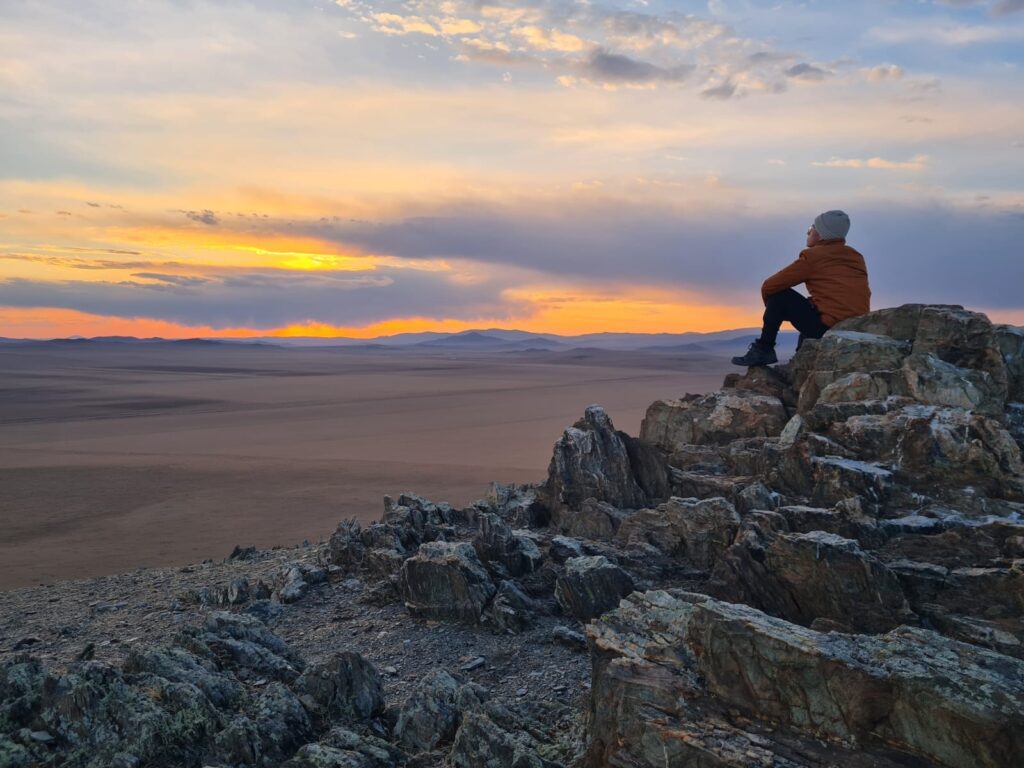
After the sunset, we went back to Gana and we had dinner together back at camp’s main building. This time we had hotpot of all things, sadly it was all beef and some more beef dumplings, I couldn’t bring myself to eat it while Emily couldn’t eat the dumplings so Gana was absolutely delighted to take it all from us.
He was saying something about the horse baby so I guess this lady luck turning into his favor. I did get to eat my fill through the noodles, mushrooms and veggies. The lady in the restaurant then started to do some karaoke and she sang for us. She even turned on these fancy lights and we all just started dancing, with me and Gana partnering up.
I sneaked in a shower with the faucets of the bathroom and went back to our tent where Emily was laying down on the bed.
We traded a lot of music that night in the dark and one of the songs that stuck with me was Spiritbird, hauntingly beautiful.
The next morning, Emily and I had a delicious breakfast where I got to taste the best cheese. I also took a shower again in the faucets which refreshed me quite a bit while we went around to check out the wooden cabins with the playful dog that was blind in one eye.
After our goodbyes, we were off to the nearby Hustai Park. Emily and I even shared an edible on the way.
When we arrived, we went with Gana inside the office building to get our tickets but there still wasn’t anyone there so we were left wandering around for a bit.
Eventually, we did get our tickets. Emily was busy talking to her friend on the phone as it was her birthday so Gana showed me this debris that came from outer space, it left a crater and then he showed me to the movie room and then the museum. At this time the gummy was starting to creep up.

It started to get full on effects as we were driving around the park, which was an amazing experience as it felt like I was in a theme park with all these ups and downs and twists and turns. We got to see a lot of wildlife like marmots, deer and the main sight the Przewalski’s horse.
The only true wild horse left in the world as all the other breeds have been domesticated.
At one point, Gana told us to walk so I assumed we were going to do a trail of some sort and Emily and I kept on walking for a long time and saw a huge herd of deer up in the mountains, I always loved that feeling of having these animals accompany us on a hike.
Emily was having second thoughts about the whole thing and was thinking that the trail was too long and that there was nothing but more trail ahead, so after a while we had a rest and decided to turn back. On the way, we got picked up by a Mongolian family and got to hitchhike back to Gana’s car.
Silly old man knew none the better.
The trip back to Ulaanbataar was a relaxing one after such a long day.
Back at UB Guesthouse, I was so tired but still tried to get some chores in. Had to do my laundry and fix my things as I was immediately leaving the next day for the Gobi Desert.
I was to mellow’ed out so during the meeting with the rest of the group with Bobbi, I was just there but not there at the same time.
It was an interesting bunch and I had my reservations at first, I didn’t know these people and I wasn’t sure about traveling with so many at the same time as I just came from traveling as a duo. There were 5 of us in that room, Hayata and Ryo from Japan, Changyoon from South Korea and Carmen for the Netherlands. Nanami who was late but arriving later that night made our group 6. All in all, I was a bit stressed and couldn’t care too much so I went back to the room to chill for a bit before heading out with Emily to grab some dinner.
Coming back, I saw Nanami come in and I managed to talk to her for a bit before retiring for the night.
Plan Your Trip to Mongolia | Best Travel Resources
Book Your Accommodations
- Booking.com – the world’s leading online booking platform for accomodations around the world, they have an extensive amount of available listings with zero booking fees and best price guarantees.
- Hostelworld – a backpacker’s best friend, Hostelworld has the largest collection of hostels and guesthouses for affordable prices.
Don’t Forget Insurance
- SafetyWing – from Nomad Insurance, an insurance by nomads for nomads. They understand our lifestyle well and have really comprehensive and flexible plans that cater to any traveler.
Find Cheap Flights
- Kiwi.com – my go-to for booking and finding the cheapest flights and it’s helped me save tons of money. They do virtual interlining which is connecting flights from airlines that do not codeshare, so you can find routes that you wouldn’t be able to find normally.
Join Tours & Activities
- GetYourGuide – is one of the best places to find unique tours and activities. I found that it’s an excellent way to meet fellow travelers and create fond memories. They are not only limited to tours as they also offer niche services such as skip-the-line tickets or private transfers.
Catch a Ride
- Rentalcars.com – nothing beats the freedom of the road, Rentalcars.com is the world’s largest online car rental service. They operate across 160 countries so they’re the perfect partner to work with if you find yourself wanting a ride.

